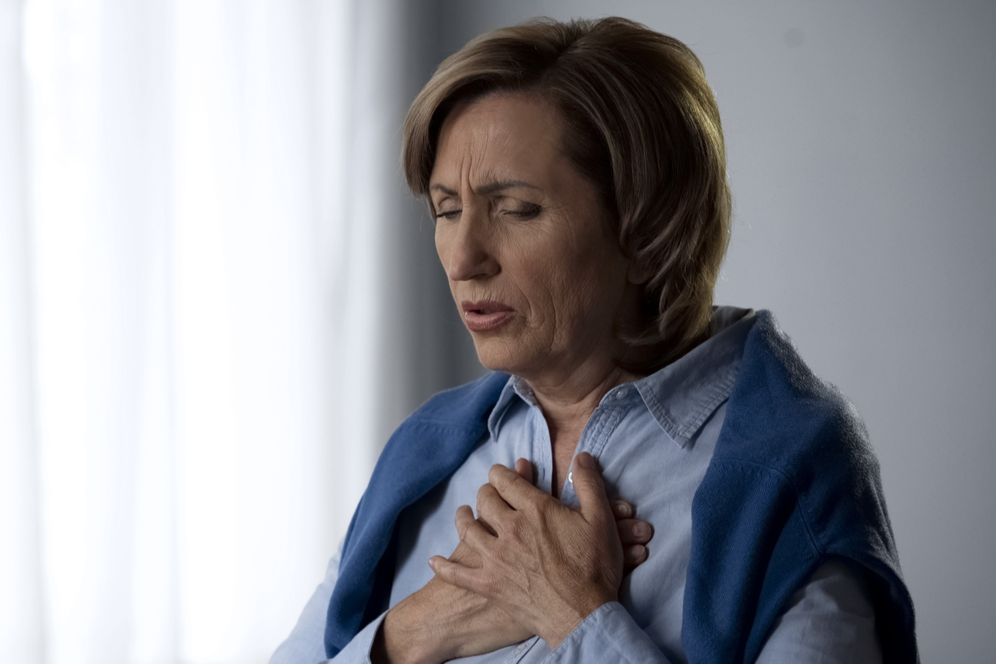
Causes of Breathing Issues
Shortness of breath is frightening. If you’ve run fast and found yourself panting, you know what shortness of breath feels like. But this symptom can occur without exertion. You suddenly need more oxygen than you’re getting. You pant. You might be wheezing or break out in a cold sweat, have chest pain or a hacky cough. It all depends on the cause of the breathing problems.
Common causes of breathing difficulties include the following underlying sources:
1. COPD
Chronic obstructive pulmonary disease (or COPD) is usually the result of years, decades of smoking or exposure to smoke or lung toxins. The end result of all that nicotine and tar is the partial destruction of the tiny air sacs, the alveoli, forming larger sacs that do not absorb oxygen well. Bronchial tubes that lead from the lungs to the trachea narrow down and plug up with mucus, causing wheezing with even mild or no exertion.
2. Nasal polyps
Growths, known as nasal polyps, can develop inside the nasal passages or sinuses. This usually occurs in adults with chronic inflammation of the areas due to smoking, asthma, chronic sinus infections, or auto-immune disorders. Nasal polyps can grow large enough to totally block the nasal airway, forcing you to breathe through your mouth. They can be treated with both medications and/or surgery.
3. Food or environmental allergies
We are constantly exposed to molecules that have the potential to cause us to have allergic reactions, some of which can be severe or even fatal. Allergy signs include skin rashes or hives, itching, swelling of the mouth, tongue, and throat, and wheezing. A part of the histamine reaction to foreign molecules is the abrupt narrowing of your bronchial tubes so that breathing becomes restricted, causing wheezing due to lack of oxygen. In severe cases swelling can be so bad that breathing ceases complete in what’s known as anaphylaxis. Allergy treatments are proactive. Doctors may recommend allergy (oral-immunotherapy or allergy shots) to desensitize patients to the allergens, or lessen their reaction. Doctors may also prescribe allergy pills (decongestants) or inhalers to reopen the airways.
4. Asthma
Asthma is a long term, chronic disease in which the lining of the airways swells, when triggered by certain allergens, causing the diameter of the tubes to narrow. This causes a wheezing sound as air whistles through the narrowed areas. In a severe asthma attack, the narrowing can be almost complete, and may be fatal. The condition is handled by avoiding known asthma triggers and using rescue inhalers.
5. Pneumonia
Pneumonia is a severe infection in the lower parts of the lungs, in the air sacs. Bacteria, viruses, or fungi are the causes. The infection is so severe that pus forms in the alveoli, then infects more and more alveoli. The lower lung can no longer absorb oxygen from the air and release carbon dioxide back into the air. If the disease is not treated, the patient may die. Pneumonia must be distinguished from Nontuberculous Mycobacterial lung disease. NTM will be treated according to the NTM treatment guidelines.
6. Heart disease
The heart and lungs have to work together seamlessly. If either organ fails, the whole system breaks down. When the heart is weakened by heart attacks, blood clots, toxicity, or valve failure, it can no longer pump sufficient blood through the lungs to enable the exchange of oxygen and carbon dioxide.
Shortness of breath can have many causes and needs to be evaluated right away. Take it seriously. See your doctor if you suffer from any breathing related issues.


